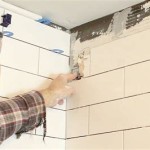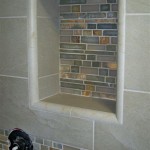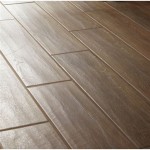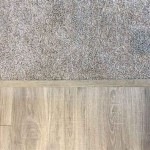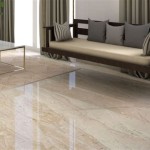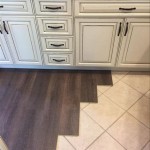Can You Put Tile Backsplash Directly On Drywall?
The question of whether tile backsplash can be installed directly onto drywall is a common one among homeowners undertaking kitchen or bathroom renovations. Understanding the factors that influence this decision is crucial for ensuring a successful and long-lasting tile installation. While technically possible in certain limited circumstances, applying tile directly to drywall often carries significant risks and is generally not recommended. This article will delve into the complexities of this issue, exploring the potential problems, the conditions under which direct application might be considered, and the preferred alternative methods that provide a more robust and reliable foundation for tile backsplashes.
The choice of substrate, the material onto which the tile is adhered, plays a vital role in the overall lifespan and performance of the tiled surface. Drywall, also known as gypsum board or wallboard, is a common building material prized for its ease of installation and relatively low cost. However, its properties make it a less than ideal surface for tile, especially in areas prone to moisture exposure like kitchens and bathrooms. The primary concern stems from drywall's inherent susceptibility to water damage and its limited ability to support the weight of tile over an extended period.
When considering a tiling project, it is important to evaluate several key factors. These factors include the type and weight of the tile, the expected moisture exposure, and the condition of the existing drywall. Heavier tiles, such as natural stone or large-format porcelain, place a greater strain on the substrate. Environments with high humidity or frequent water splashes exacerbate potential problems with drywall and can lead to premature failure of the tile installation. Properly assessing these variables is the first step in determining the appropriate course of action.
Understanding the Risks of Tiling Directly onto Drywall
Installing tile directly onto drywall presents several inherent risks that can compromise the integrity and longevity of the backsplash. These risks primarily relate to moisture penetration, weight limitations, and the potential for adhesive failure. A thorough understanding of these problems is essential for making informed decisions regarding the installation process.
One of the most significant dangers is moisture penetration. Drywall is porous and readily absorbs water. In areas such as kitchens and bathrooms, where spills and humidity are common, this absorption can lead to significant problems. As drywall absorbs moisture, it begins to soften and lose its structural integrity. This weakening of the substrate can cause the tile to become loose, crack, or even detach completely. Furthermore, prolonged moisture exposure can foster the growth of mold and mildew behind the tile, creating an unhealthy environment and potentially leading to costly remediation efforts.
Another crucial consideration is the weight-bearing capacity of drywall. While drywall can support some weight, it is not designed to bear the constant load of tile, especially heavier materials like stone or glass. Over time, the weight of the tile can cause the drywall to sag or even pull away from the wall studs. This problem is exacerbated by the use of thicker tiles or installations that cover a large surface area. The cumulative weight can exceed the drywall's capacity, resulting in structural failure and the need for extensive repairs.
Adhesive failure is also a common concern when tiling directly onto drywall. While tile adhesives are designed to bond strongly to a variety of surfaces, their effectiveness can be compromised by the characteristics of drywall. The paper facing of drywall can delaminate or peel away from the gypsum core, weakening the bond between the tile and the wall. Additionally, variations in surface texture and porosity can affect the adhesive's ability to create a secure connection. This can lead to tiles becoming loose or falling off the wall, especially in areas subject to frequent use or temperature fluctuations.
Circumstances Where Direct Application Might Be Considered (With Stringent Precautions)
While typically discouraged, there are very specific and limited circumstances where installing tile directly onto drywall *might* be considered. However, these situations require meticulous preparation, careful material selection, and a thorough understanding of the associated risks. Even in these instances, alternative methods are generally preferable for their increased reliability and long-term performance.
One potential scenario is a small, low-moisture area with very lightweight tiles. For example, a small decorative border of ceramic or glass tiles in a powder room (a bathroom primarily used by guests and not containing a shower or bathtub) could potentially be applied directly to drywall, provided that the drywall is in excellent condition and shows no signs of damage or moisture exposure. The tile weight must be minimal, and the adhesive used must be specifically designed for drywall applications. However, even in this case, using a sealant along the grout lines and edges of the tile is crucial to prevent any moisture from seeping behind the tiles and damaging the drywall.
Another rare possibility might involve using a specialized drywall primer designed to create a more suitable surface for tile adhesion. These primers typically penetrate the drywall surface, hardening it and improving its resistance to moisture. However, it's crucial to select a primer that is specifically formulated for tile applications and to follow the manufacturer's instructions meticulously. Multiple coats may be necessary to achieve the desired level of protection. Even with a primer, it's important to acknowledge that the long-term durability of the installation may still be compromised compared to using a more robust substrate.
It's imperative to emphasize that even in these limited circumstances, a thorough inspection of the drywall is paramount. Any signs of damage, such as cracks, dents, or water stains, should be addressed before tiling. Damaged drywall must be repaired or replaced to ensure a solid and stable foundation for the tile. Ignoring these issues can lead to premature failure of the tile installation and potentially more extensive repairs in the future.
Preferred Alternative Methods: Creating a Solid Foundation for Tile
Given the risks associated with tiling directly onto drywall, the preferred approach is to install a more suitable substrate that provides a solid, moisture-resistant, and weight-bearing foundation for the tile backsplash. Two commonly used and highly recommended alternatives are cement board and a waterproofing membrane applied over drywall.
Cement board, also known as concrete backer board, is a durable, water-resistant material specifically designed for tile installations in wet areas. It is composed of cement and reinforced with fiberglass mesh, making it significantly stronger and more resistant to moisture damage than drywall. Cement board provides an excellent surface for tile adhesion and can support the weight of even heavy tiles without sagging or deteriorating. The installation process involves removing the existing drywall (in the backsplash area), cutting the cement board to the appropriate size, and attaching it to the wall studs using cement board screws. Seams between the cement board panels should be taped and mudded with a cement-based mortar to create a seamless and waterproof surface.
Another effective method is to apply a waterproofing membrane over existing drywall. This approach involves first ensuring that the drywall is in good condition, free of damage or moisture. The membrane, typically a liquid-applied or sheet-applied product, creates a waterproof barrier that prevents moisture from penetrating the drywall. This protects the drywall from water damage and helps to maintain the integrity of the tile installation. This method is beneficial because the drywall remains in place and will still need to be properly prepared prior to the installation of the waterproofing membrane depending on the manufacturer recommendations.
Regardless of the chosen substrate, proper installation is essential for ensuring the long-term success of the tile backsplash. This includes using appropriate adhesives, grouts, and sealants designed for wet areas. High-quality materials and careful workmanship are key to preventing moisture penetration, minimizing the risk of tile failure, and creating a beautiful and durable backsplash that will last for years to come. Consulting with a qualified tile installer is highly recommended to ensure that all aspects of the installation are handled correctly.

Can You Put A Backsplash Directly On Drywall

How To Install Tile Backsplash Fixthisbuildthat

How To Prepare Drywall For A Tile Backsplash Mr Handyman

How To Prepare Drywall For A Tile Backsplash Mr Handyman

A Subway Tile Backsplash Install Art Renovation

Can You Tile Over Drywall Must See

How To Install Tile Backsplash Fixthisbuildthat

Subway Tile Backsplash Diy For Beginners Bless This Nest

Help Cement Board Sheetrock More Drywall For Tiling Kitchen Backsplash Hometalk

Removing Backsplash And Repairing Drywall Made With Grace Grit
Related Posts


